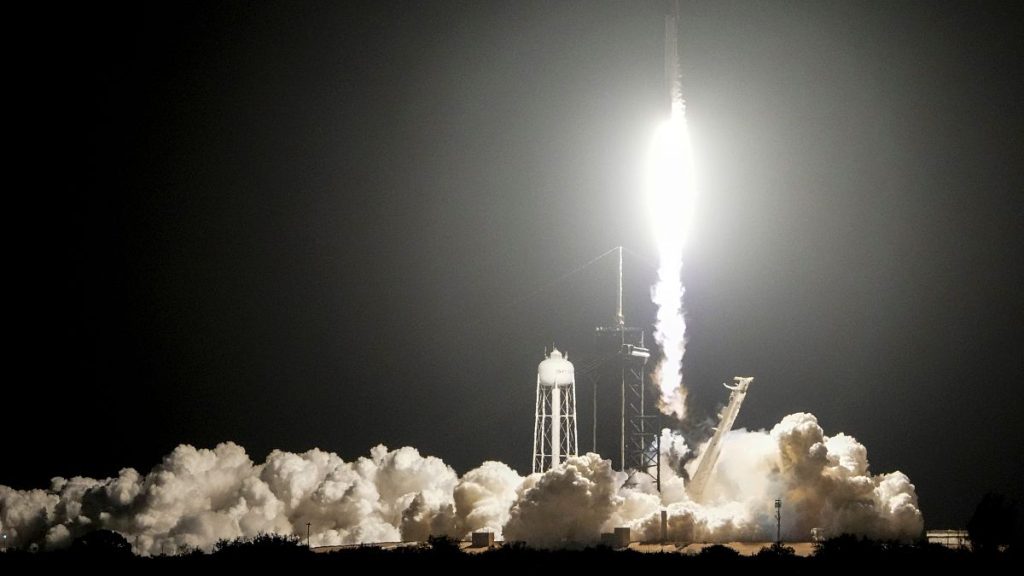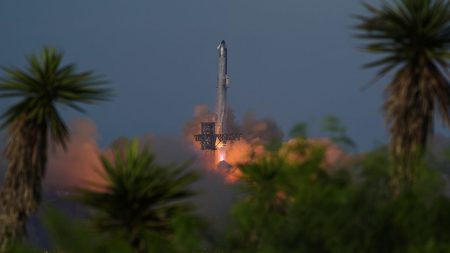Paragraph 1: A New Era of Lunar Exploration Dawns with Dual Lander Launch
SpaceX marked a significant milestone in lunar exploration on Wednesday by launching two privately developed lunar landers, ushering in a new era of commercial ventures on the moon. The two landers, built by ispace of Japan and Firefly Aerospace of Texas, embarked on their lunar journey from NASA’s Kennedy Space Center, sharing a ride to optimize costs before separating an hour into the flight. This dual launch signifies a growing trend of private companies partnering with government agencies to advance space exploration and unlock the moon’s potential resources and scientific discoveries.
Paragraph 2: ispace’s Second Attempt and Firefly’s Debut Lunar Mission
For ispace, this launch represents a second chance at a lunar landing, following a crash during their initial attempt two years ago. This time, their lander, named Resilience, carries a small rover equipped with a scoop to collect lunar soil samples for scientific analysis. The mission also includes testing potential food and water sources for future human explorers, laying the groundwork for sustainable lunar habitats. Meanwhile, Firefly Aerospace makes its lunar debut with the Blue Ghost lander, carrying ten NASA-sponsored experiments. These experiments encompass a variety of scientific investigations, including analyzing lunar dust, measuring subsurface temperatures, and testing a device designed to mitigate the effects of abrasive lunar dust on spacesuits and equipment.
Paragraph 3: Distinct Landing Sites and Mission Timelines
The two landers are targeting different landing sites and have distinct mission timelines. Firefly’s Blue Ghost, named after a species of firefly native to the Southeastern United States, is expected to reach the moon first, attempting a landing in early March at Mare Crisium, a volcanic plain in the moon’s northern hemisphere. ispace’s Resilience, slightly larger than Blue Ghost, will take a more circuitous route, requiring four to five months to reach its destination at Mare Frigoris, located even further north on the moon’s near side. The staggered landing attempts offer valuable opportunities to compare and contrast data collected from different lunar regions.
Paragraph 4: Collaboration and the Future of Lunar Exploration
Despite the competitive nature of space exploration, both ispace and Firefly emphasize collaboration and the shared goal of advancing lunar science and technology. Takeshi Hakamada, ispace’s founder and CEO, stressed that their mission is not a race but a collaborative effort to expand humanity’s understanding of the moon. Jason Kim, CEO of Firefly, acknowledged the inherent challenges of lunar landings, given the harsh lunar environment and the history of past failures. Both companies recognize the importance of meticulous planning and engineering to ensure successful missions.
Paragraph 5: Paving the Way for NASA’s Artemis Program
These private lunar missions play a crucial role in supporting NASA’s Artemis program, which aims to return astronauts to the moon by the end of the decade. The data and technology tested by these landers will contribute to a better understanding of the lunar environment and inform the development of future human missions. Nicky Fox, NASA’s science mission chief, emphasized that these missions are essential for preparing for the return of humans to the moon, by gathering valuable scientific data and testing critical technologies in advance of crewed missions.
Paragraph 6: Mission Objectives and Financial Aspects
If successful, both spacecraft will operate for approximately two weeks during the lunar day, powering down during the lunar night. ispace’s small rover will explore the area around the lander, travelling up to hundreds of meters at a slow but steady pace, while also deploying a small art installation – a toy-sized red house. NASA’s financial contribution to these missions underscores the agency’s commitment to leveraging private sector partnerships to advance lunar exploration. NASA is providing $101 million to Firefly for the Blue Ghost mission, including $44 million for the scientific experiments. ispace has not disclosed the exact cost of their mission, but it is reportedly less than the $100 million spent on their first attempt. These missions, along with the upcoming second attempt by Intuitive Machines, represent a resurgence of lunar exploration and a significant step towards establishing a sustainable human presence on the moon.














